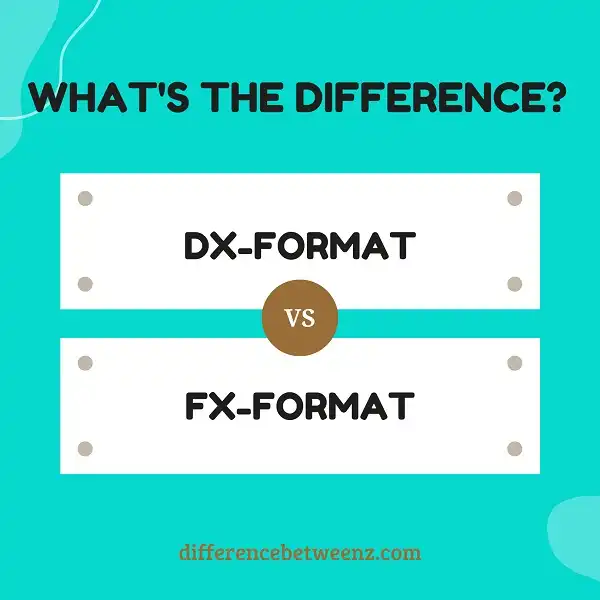Nikon has two different formats for digital SLR cameras: FX-format and DX-format. Both have their own advantages and disadvantages, but which one is right for you? In this blog post, we’ll compare the two formats and help you decide which one is best for your photography needs.
What is DX-format?
DX-format is a sensor size used in digital cameras. DX-format sensors are typically used in entry-level and mid-range cameras, as they are smaller and less expensive than full-frame sensors. DX-format sensors are also referred to as APS-C sensors. DX-format sensors have a crop factor of 1.5, which means that they will have a narrower field of view than a full-frame sensor with the same lens. For example, if you were to attach a 50mm lens to a DX-format camera, the field of view would be equivalent to a 75mm lens on a full-frame camera. DX-format sensors are popular among photographers who want the image quality of a DSLR without the added weight and expense of a full-frame camera.
What is FX-format?
FX-format is an image sensor format used in digital cameras. FX-format sensors are slightly larger than the more common DX-format sensors, and as a result, they offer a number of advantages. First, FX-format sensors allow for greater levels of detail and sharpness. Second, FX-format sensors have better low-light performance thanks to their larger surface area. Finally, FX-format sensors provide a shallower depth of field, which can be beneficial for certain types of photography. While FX-format cameras are typically more expensive than their DX-format counterparts, the added capabilities can make them worth the investment for serious photographers.
Difference between DX-format and FX-format
DX-format and FX-format are two popular image sensor formats used in digital cameras. DX-format is a smaller sensor size, typically used in entry-level and mid-range DSLR cameras. FX-format is a larger sensor size, typically used in high-end DSLR cameras. Both formats have their own advantages and disadvantages. DX-format cameras are typically cheaper and lighter weight, making them a good choice for travel photography.
However, DX-format sensors have less resolution than FX-format sensors, resulting in lower image quality. FX-format cameras are typically more expensive but offer superior image quality. They are also often larger and heavier, making them less convenient for travel photography. Ultimately, the best camera format for you depends on your budget and photography needs.
Conclusion
Nikon has two types of camera formats- DX and FX. The difference between the two is that the DX-format uses a smaller sensor, which gives you a crop factor of 1.5x. This means that if you use a 50mm lens on a DX camera, it will act like a 75mm lens (50mm x 1.5 = 75mm).
The FX-format uses a full-frame sensor, so there is no crop factor. If you use a 50mm lens on an FX camera, it will be just like using a 50mm lens. So, which format should you choose? Well, that depends on what type of photography you want to do.


